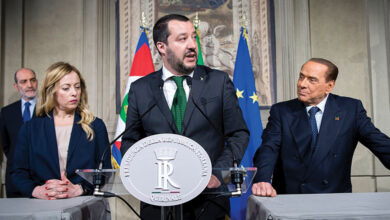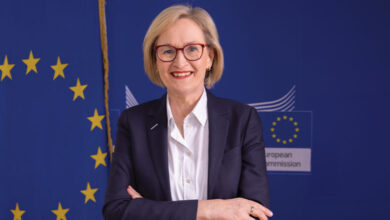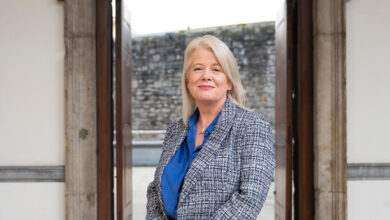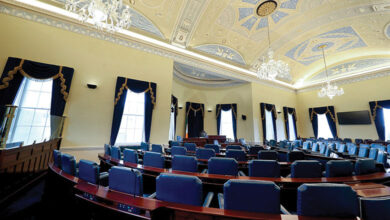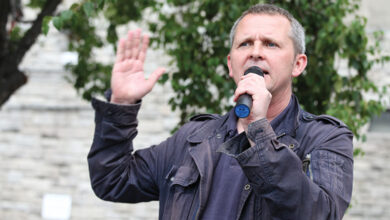On the face of it
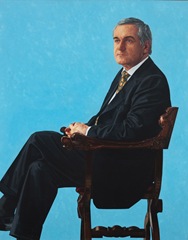 eolas asks what is unique about painting faces as government-owned portraits finish their tour.
eolas asks what is unique about painting faces as government-owned portraits finish their tour.
Government art collections usually adorn public offices but the general public themselves each year have the chance to see what hangs on those walls. ‘Faces’ was the most recent display and is just concluding.
Annual joint art exhibitions organised between the Office of Public Works (OPW) and the North’s Department of Finance and Personnel (DFP) have been held for 12 years.
This year’s exhibition was on show at Queen’s University Belfast in August and Portstewart’s Flowerfield Arts Centre in September. It called at the Main Guard, Clonmel, during October and runs to 23 December in the Farmleigh Gallery, Castleknock, Dublin. Admission is free of charge.
Jacquie Moore is the OPW’s deputy art advisor and organised the event along with Aaron Boyd from the DFP’s properties division.
“Every year we discuss ideas for the forthcoming show and try to explore options we haven’t covered before,” she explains, mentioning that the idea of portraits came up in a meeting in Belfast with the DFP earlier this year.
“The OPW commissions the official state portraits of the Taoiseach, President and other senior government officials and also the OPW manages historic properties, therefore we had a lot of portraits to choose from.” The DFP has a smaller collection but it received works from the Assembly, the Arts Council and Queen’s University.
Well-known figures from the political and cultural landscape of the island were to be included. The office also purchases works from artists starting out in their careers, which provides more contemporary pieces. The end result took the audience “on a whistle-stop tour of portraiture from the mid-seventeenth century to works created last year.”
 It is never easy for an exhibition organiser to choose their personal favourites. “I often consider it the equivalent of asking a parent to pick a favourite child,” she quips, but each has its virtues.
It is never easy for an exhibition organiser to choose their personal favourites. “I often consider it the equivalent of asking a parent to pick a favourite child,” she quips, but each has its virtues.
As an art historian, Jacquie is drawn to works from the past. Both the portraits of the Countess of Southampton and Lucy, Lady Loftus, are “tremendous” art works. However, the humour of ‘Mammy’s Boy’ and the tender embrace of the young freckled couple with the constellation etched onto the glass by Oisín Byrne, also both hold appeal.
Bertie Ahern’s portrait is an “excellent example of how good a commissioned portrait can be” and Jacquie was also impressed by the portrait of Seamus Heaney and self-portrait of Michael Bell, from the northern collection.
As different venues are used, some works appear stronger in one venue than in others. An illustrated catalogue of the exhibition was also distributed free of charge to visitors.
“Portraiture is popular because I believe that faces always fascinate people. We are all drawn to portraits,” Jacquie adds. “When confronted with a portrait, we decide if is a good likeness, if it is well painted, and if it reveals the personality of the sitter.
“Of course, a good portrait will do all three. In contemporary portraiture, the artist is now free also to move beyond just producing a good likeness as a photograph can do that. The artist can explore his or her creativity and create the essence of the sitter in whatever artistic medium they are working in.”
A portrait artist will also know that the sitter has his or her own expectations, although it is a “brave endeavour” to agree to sit for such a piece. Portraits are also historic documents, reflecting a time and place in society, like “mirrors into the past”.
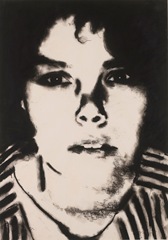 In conclusion, Jacquie says: “In all the great galleries of the world, many of the most famous masterpieces are portraits – works by Titian, Rembrandt, Rubens, Gainsborough, and Van Dyck are part of the cultural psyche of western Europe.”
In conclusion, Jacquie says: “In all the great galleries of the world, many of the most famous masterpieces are portraits – works by Titian, Rembrandt, Rubens, Gainsborough, and Van Dyck are part of the cultural psyche of western Europe.”

